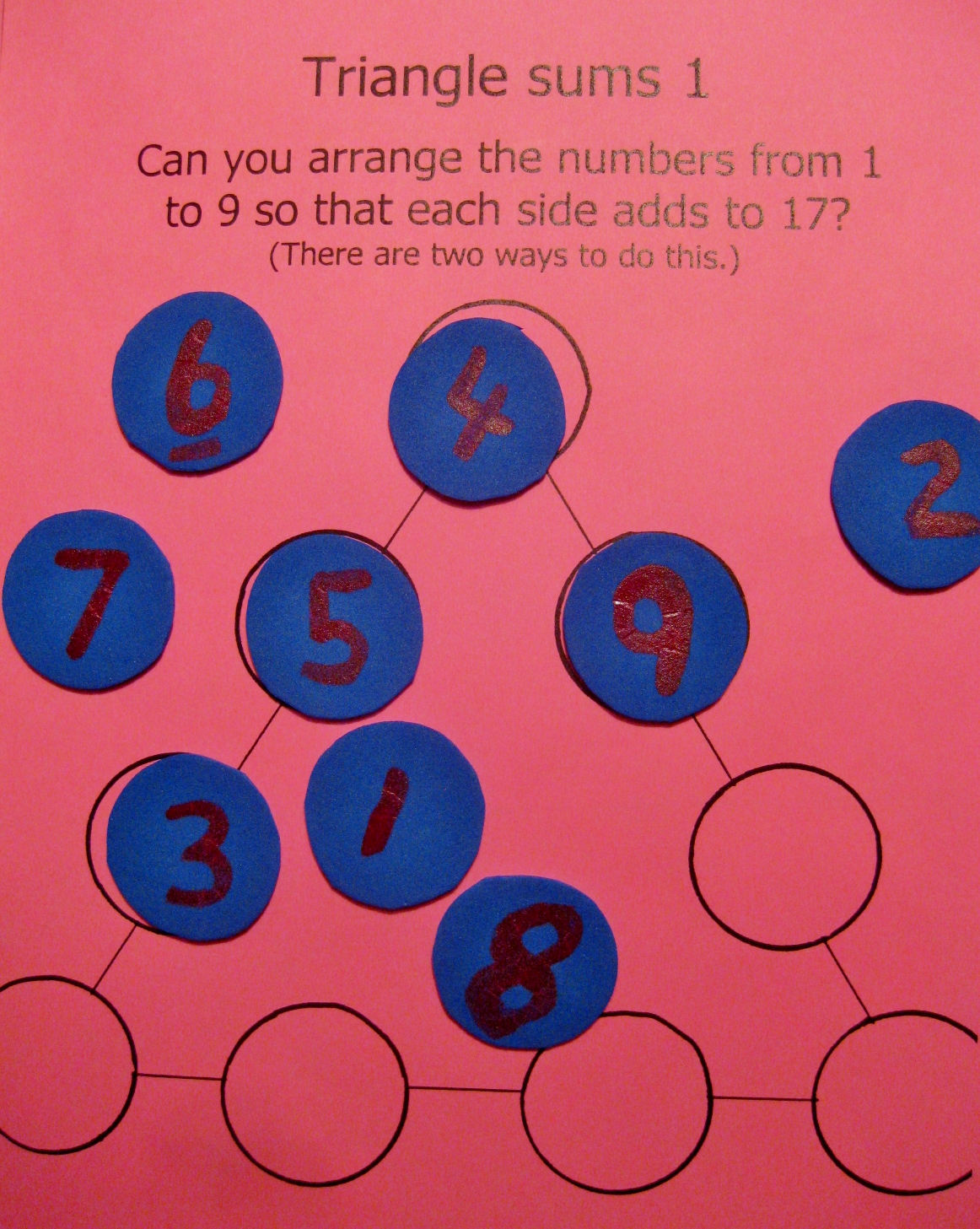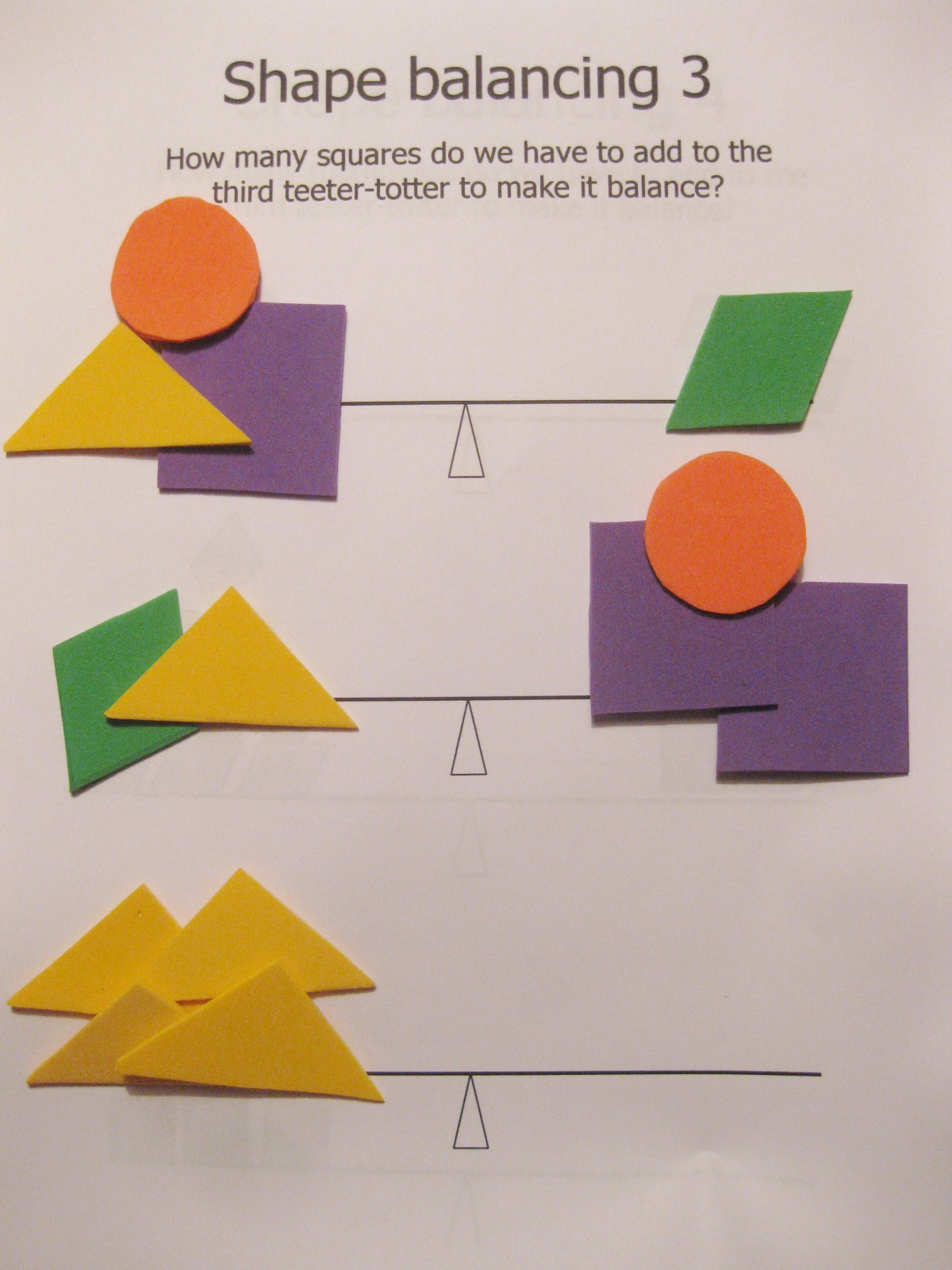Arithmetic & algebra
By Susan Milner
15-Scratch and 24-Scratch are great games for almost anywhere you have a few spare minutes. You don’t need anything at all to play them, but it helps if you have something to write on and something to write with.
A more complicated version allows more operations and can entertain people for hours. If you write the numbers from 1 to 100 on a board with space beside each one, students can put up their solutions over several days.

A magic triangle with 9 digits
A magic triangle using the numbers 1-6 is simple enough for children who have just become comfortable with adding single digits. For older students, you can make it more complex by trying different sets of six numbers. Are there sets of six numbers that won’t work at all? For a set of numbers that does work, how many different target numbers can you reach? And for each target number, how many ways can you find to arrange the six given numbers? This can be played with just paper and pencil, but it is quicker and more fun if you have numbered counters (or even just numbered bits of paper).
Bigger magic triangles use nine numbers each, such as the one on the right. Here are some puzzles involving nine single digits. Ambitious puzzlers might enjoy the challenge of using two-digit numbers in the triangle once they’ve solved the given puzzles.
Tired of adding? Try some difference triangles difference triangles. Start by finding a single solution for a given size, then try to find all possible solutions. Again, this puzzle is more fun if you use numbered counters than if you just use a pencil and eraser. Here are templates for 6-triangles and for 10-triangles . (Turn them upside down to use them.) Once you’ve solved a couple of difference triangles, you might try using a different set of numbers. Will it work with even numbers? With odds? What happens if you start at the bottom point and work upwards, allowing yourself to use any numbers, each one once only?
Baffle your audience by mind-reading! Here is the basic game and here is an alternative set of cards if you want to photocopy them on different colours of paper. This game is actually all about base 2.
Finally, here are some shape-balancing puzzles to help introduce algebraic thinking.

shape balancing